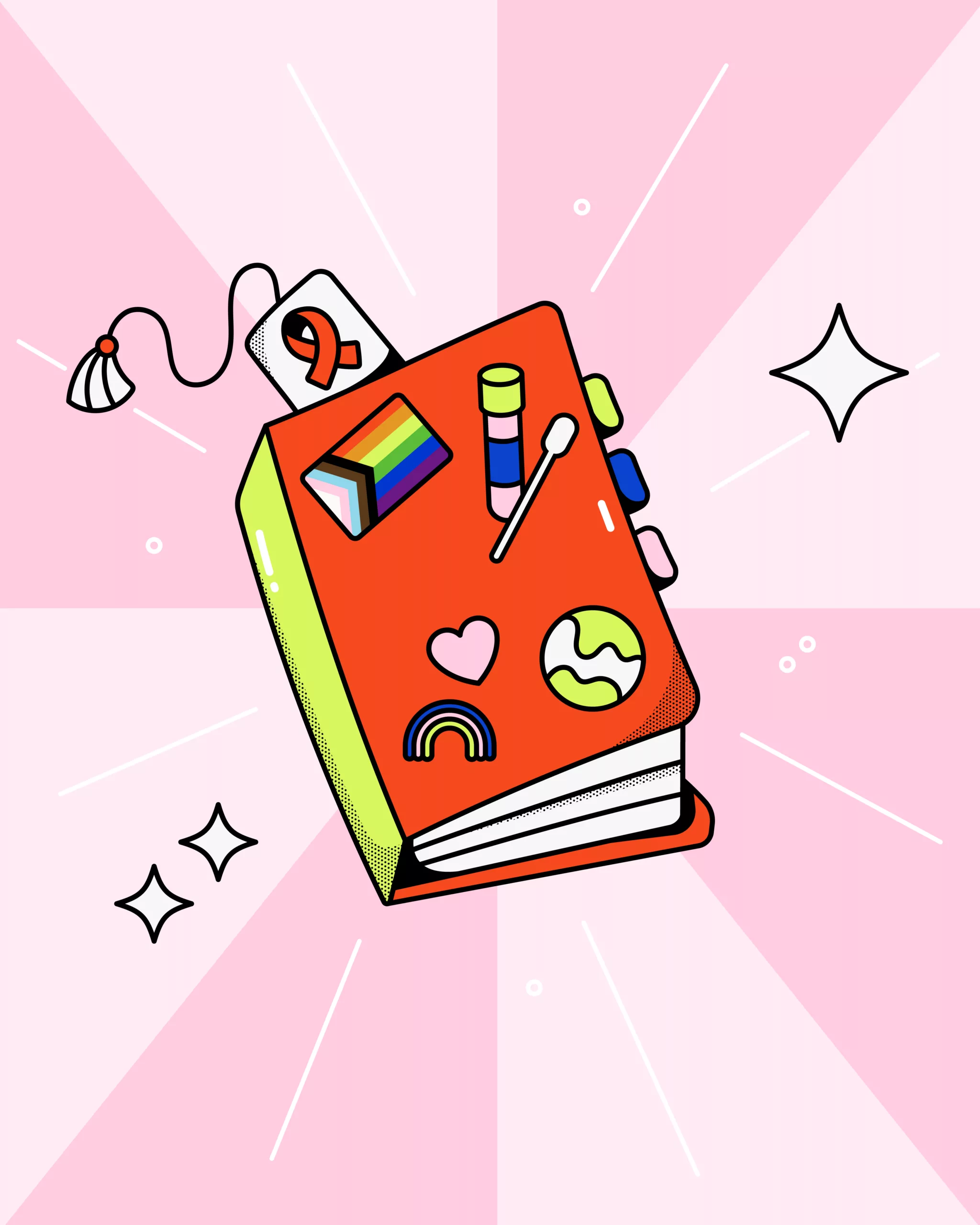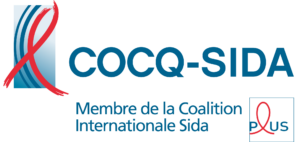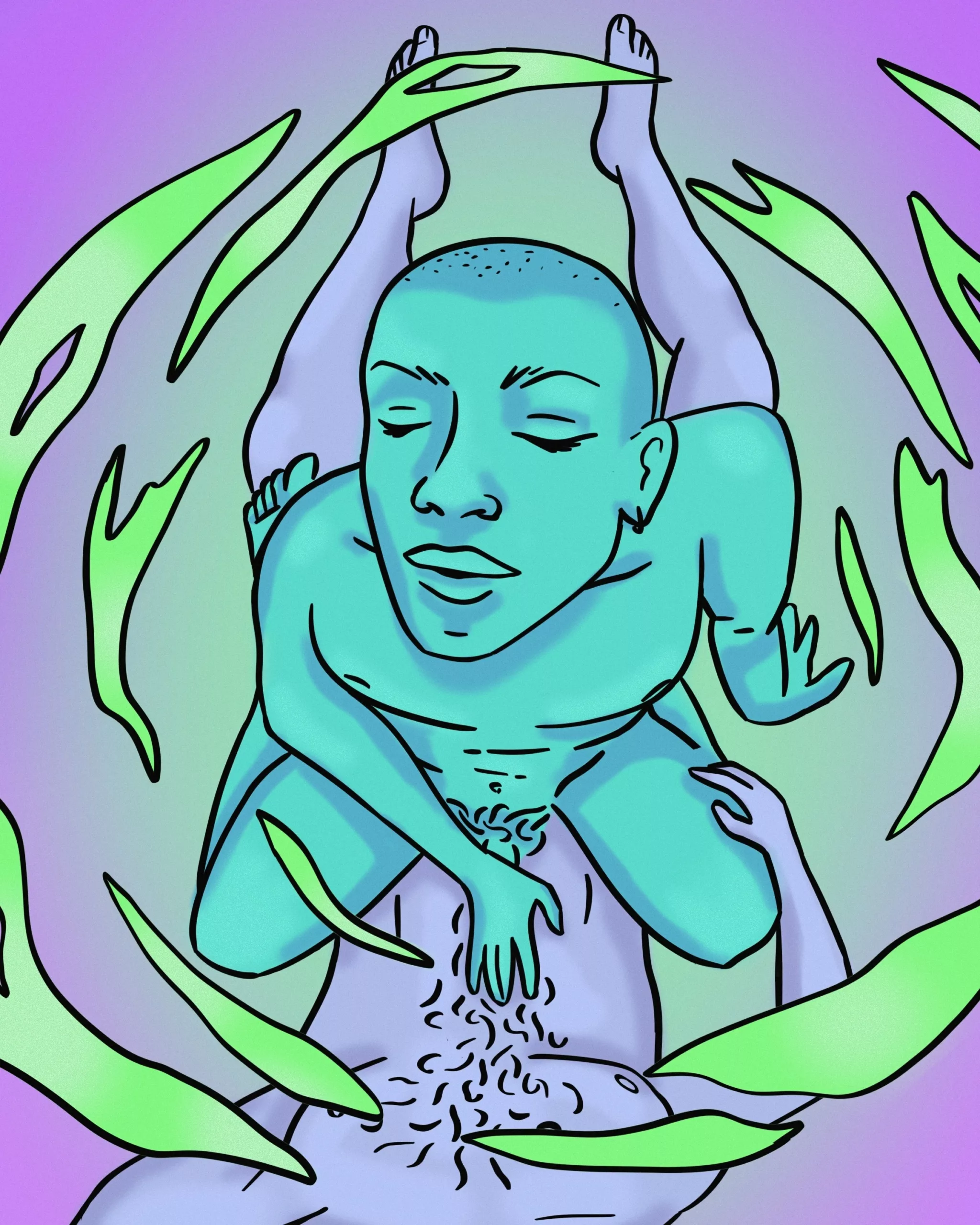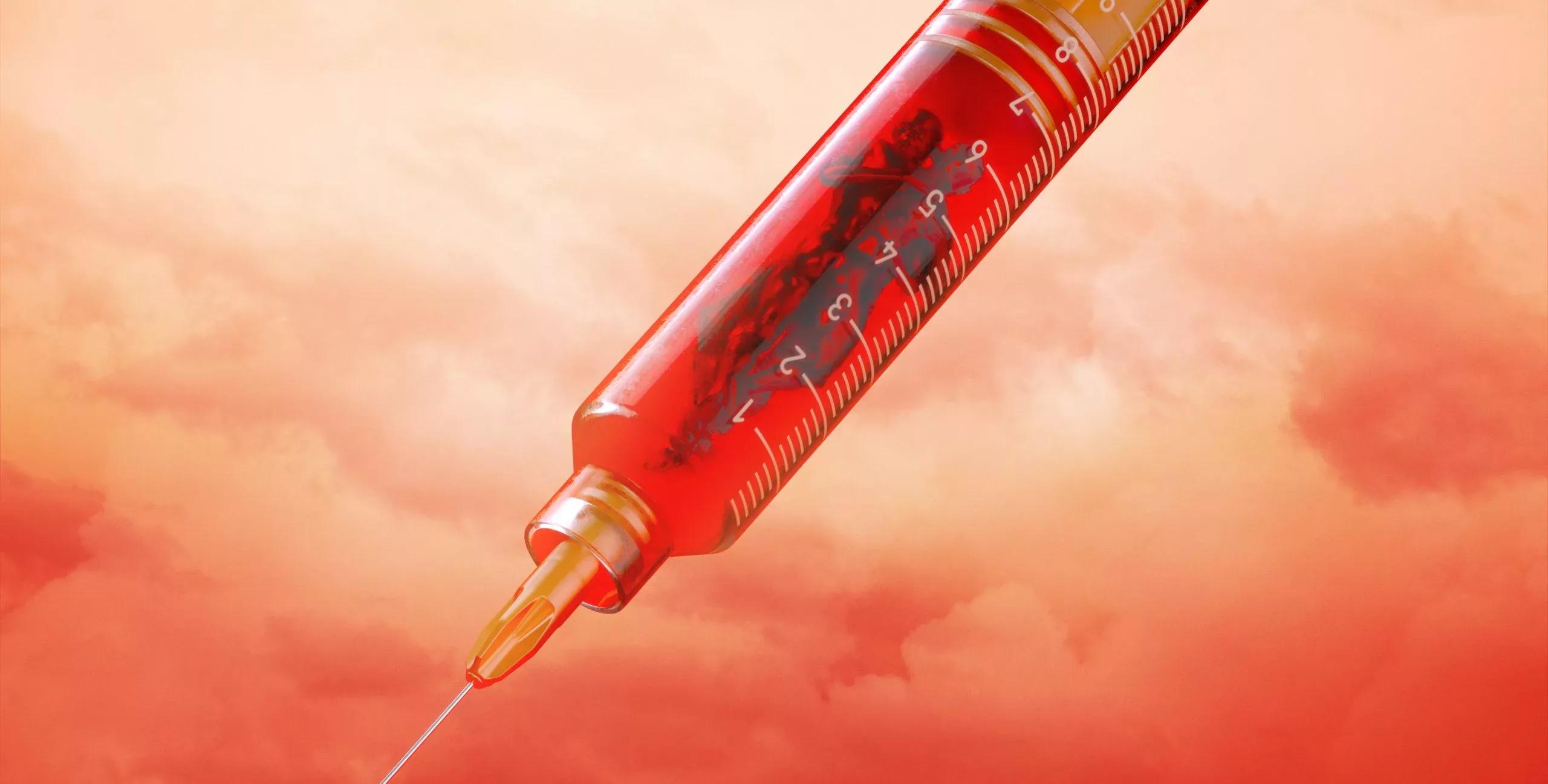Your cart is currently empty!

What My Gay Friend Taught Me About STBBI Testing

Cet article est présenté par COCQ-SIDA, la Coalition des organismes communautaires québécois de lutte contre le sida.
Throwback — Summer 2017
I am 25.
It’s a hot July evening, my friends and I are sitting on a blanket in Parc La Fontaine, each holding a can of Pepito sangria (we’ve all been there).
We’re chatting about everything and nothing, but above all, our chat is taboo-free: in the span of four minutes and fifteen seconds, the sentences “the last time I got hammered, I had to ask my boyfriend to remove my tampon for me,” “I think I have IBS,” and “I squirted this morning” are floating around in our ecosystem of eclectic confidences.
Given that we’ve been friends since the first day of high school, awkwardness is nonexistent.
At least, that’s what we thought.
After Gwen revealed that she nearly puked up her sashimi all over her boyfriend’s junk during a tad-too-intense blowjob, Jade tells us that she thinks she has the clam.
If passersby who didn’t know us had witnessed our conversation, the chances of them detecting the slightest embarrassment would be slim. Except that, even after ten years of friendship, I can see that Jade’s revelation has destabilized us.
As model friends (or those who try to be), we receive her concerns with kindness and we try to reassure her. Nevertheless, a barely perceptible shock wave goes through us and it’s hard to find the right words.
With hindsight, I blame our reaction on the fact that we were a group of girls in their early twenties who were mostly straight and who were in faithful monogamous relationships for a while Only Jade and Noémie were single.
Ok, I got off (teehee) topic a bit. Back to eight years earlier on the Plateau-Mont-Royal at this itchier than expected picnic.
Despite all our good intentions, we were (quite) ignorant about sexually transmitted and blood-borne infections (STBBIs) and screening. I realized it, Jade realized it, all of us realized it.
Once our confession session was over, I met with my friend Fabien at a bar in the Village.
He quickly notices that my mind is elsewhere, so I explain to him that my friend just told us that she thinks she has chlamydia and that my reaction was “that sucks” (my words at the time).
For someone who has been indulging in carnal pleasures for eight years, I realize that I don’t know much about STBBIs other than the fact that they scare me (I admit it).
That’s all it takes for my friend to get passionate: “It’s because you straight people have been much less targeted by the big STBBI crises for sooo long, that you’re generally clueless when it happens to you!”
“What do you mean?” I ask.
[The following is his TED Talk on STBBIs and their screening, which I still remember to this day, enhanced with information found in scientific articles. OK bye now, that was my Malcolm in the Middle moment, but in article form.]Fabien resumes:
“First, I don’t think I’m teaching you anything new by telling you that the gay community has been experiencing a huge HIV crisis since the 1980s. At that time, we knew that we were dealing with something deadly, but we didn’t know what it was, how it was transmitted, and how to treat it. It was a real pandemic.”
“A pandemic is when it affects the whole planet, right?” [Lol, today this question seems absurd to me.]
“Exactly. Except that it’s not just the virus that has spread globally… it’s prejudice too. People who had ‘nontraditional’ sexual practices, such as those in queer communities, especially gay men, were singled out.
“At the height of the crisis, HIV was often called ‘the gay plague’ or ‘gay cancer. It sent the message that gay men were automatically associated with this virus.
“As you can imagine, homophobic fear and violence were rampant at the time. Society tried to control gay men and blamed the crisis on their sexuality.
“The association between ‘sex between two men’ and ‘AIDS’ was so widespread that even gay men began to believe that sooner or later they would contract HIV. So much so that at a certain point, some of them started to stop using protection.”
“They stopped???”
“Imagine that you were told that no matter how hard you try not to get pregnant, that it’s just a matter of time… and you don’t even know when. Wouldn’t you find condoms to be relatively useless after all? Now, I’m not comparing HIV to a baby, but you get the idea. [Je pigeais en titi.]
“It was so intense that even access to healthcare was restricted. As if our sexual orientation took away our right to good health or to take charge of our sexual health.
“All that to say that, as the 2SLGBTQIA+ community was left to fend for itself, we had no choice but to advocate for treatment if we wanted to survive.
“That crisis was tough, tragic, and complicated. Now, however, gay men and queer people in general have a better understanding of STBBIs, prevention, and screening For once, we are ahead of you straight people.
“Sometimes, just by hearing your stories, I have the impression that your ‘no-homo’ status leads you to engage in riskier behaviours.”
“What kind of behaviours?”
“For example, not using protection in a monogamous relationship because you’re exclusive, but also not getting tested when the relationship ends and you get new partners.
“Or deciding to stop using condoms ‘because you love and trust them’.
“Or waiting until you develop symptoms before getting tested… when in reality, you can have an STBBI without it itching or burning.
“But hey… I don’t blame you. We don’t have the same history.
“So tell your friend to:
- Not panic if she thinks she has the clam; it’s curable with antibiotics like any other bacterial infection that would affect any other body part
- Get tested ASAP
- Protect herself if she has other sexual encounters before obtaining her test results
- Not freak out if she receives another diagnosis; scientific advances are impressive now and even chronic STBBIs can be treated can be treated
- Thank us gay people.”
Thank you, gay people. Absolutely.
Thank you to everyone in the 2SLGBTQIA+ community who has fought for the advancement of modern medicine and who comfort and educate their friends today—like me—who don’t know or understand everything, but who try their best.
-
Arkell, C. (2021). CATIE. (2021). Pre-exposure prophylaxis. https://www.catie.ca/pre-exposure-prophylaxis-prep-0 https://www.catie.ca/sites/default/files/2021-11/fs-prep-07212021-fr.pdf
Hunt, M. (1986). Teaming up against AIDS. New York Times Magazine, 2, 42-51.
Pisani, E. (2010). The wisdom of whores: Bureaucrats, brothels and the business of AIDS. Granta Books.
CATIE. (2022). A history of HIV/AIDS. https://www.catie.ca/a-history-of-hivaids
Tan, D. H., Hull, M. W., Yoong, D., Tremblay, C., O’byrne, P., Thomas, R., … & Shafran, S. (2017). Canadian guideline on HIV pre-exposure prophylaxis and nonoccupational postexposure prophylaxis. Canadian Medical Association Journal, 189(47), E1448-E1458.






